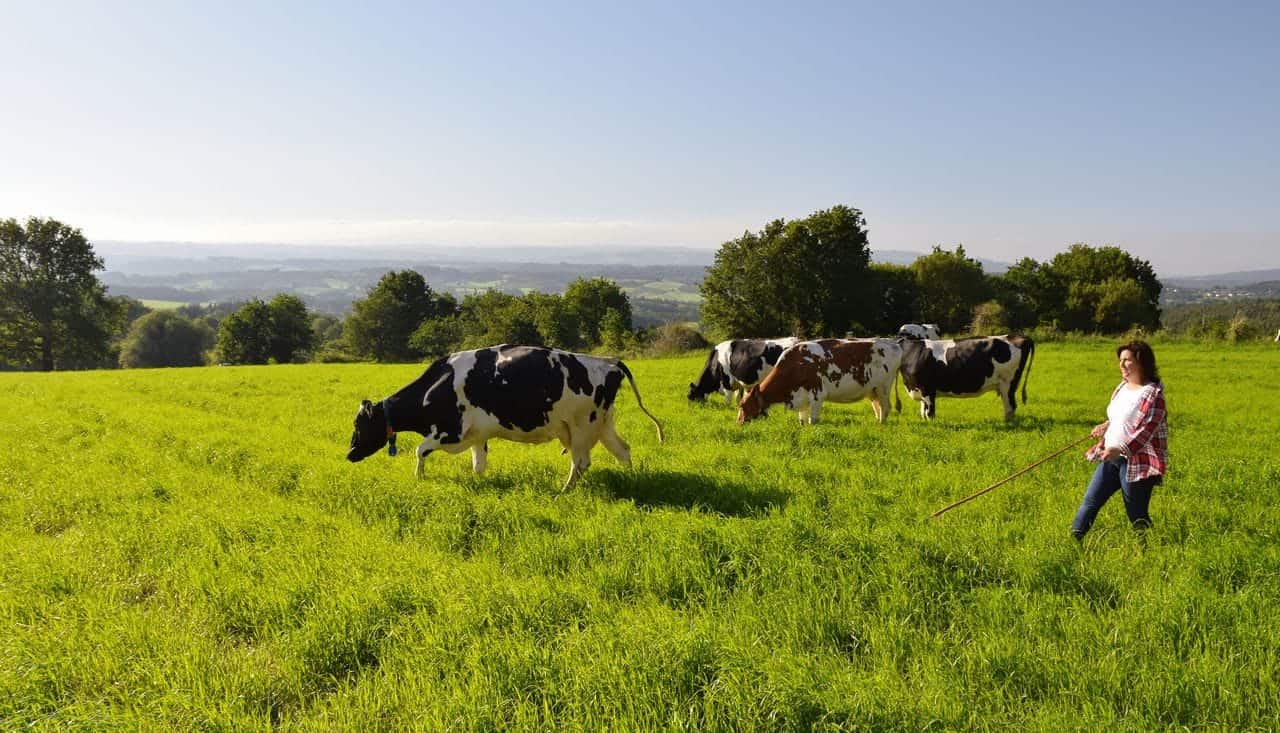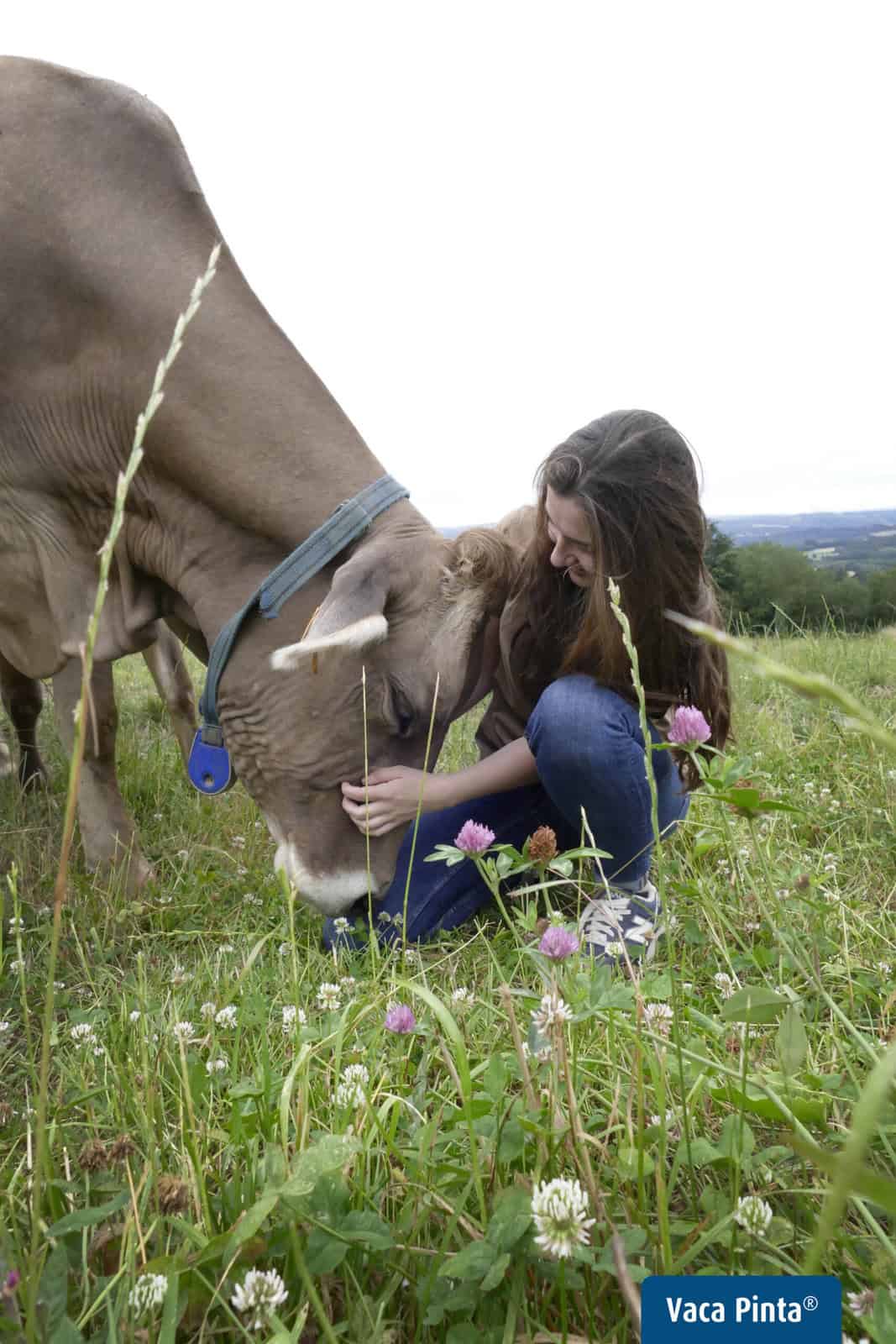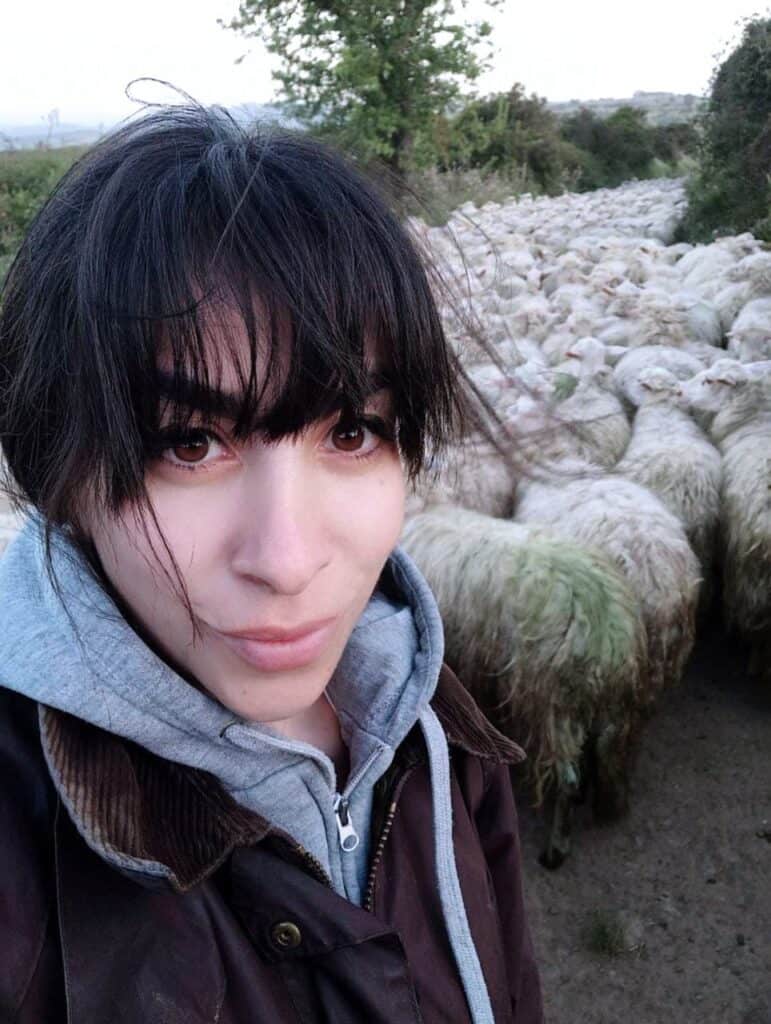
Photography by Chelo Lopez
No farms, no food—it’s a phrase you’ve probably seen on a bumper sticker, but its message only tells half the story. To truly call out the forces threatening our grub, the slogan needs a slight tweak: No farmers, no food.
For centuries, we’ve relied on traditions of ancestral succession to keep farms running. But with Boomers aging out of the business and millions of acres of land set to change hands in the next 20 years, it’s getting harder to convince young people to dedicate themselves to a life in overalls—and their ambivalence has thrown the industry into a bit of an identity crisis.
The (second) oldest profession
These personnel shortages have hit cheese hardest at ground zero: shepherds. While this term may bring to mind sheep (or the Bible, or Brokeback Mountain), here it functions as a catchall for anyone who raises grazing animals for milk. It is, as one source told me, one of the oldest professions (second only to prostitution), and it reaches far beyond a man with a staff in the Basque country. There are shepherds on almost every continent, from Fulani cowherds in West Africa to Sámi reindeer herders in the Arctic. (There are also goatherds in southern China, Raika camel herders in Rajasthan, Quechua alpaca and llama herders on the Andean altiplano, Kazakh nomads taking yaks across the Mongolian Steppe, and people leading water buffalo through the marshes of southern Iraq.)
And all this work is integral to cheese, because every one of these animals produces milk. “They basically act as solar aggregators,” says Ilse Köhler-Rollefson, a camel farmer, author, and program manager for the League of Pastoral Peoples. “They eat in these sparsely vegetated areas, they produce food in areas where nothing else can be done.” Grazing animals are also great for soil, putting nutrients back into the dirt and reducing flood risk by increasing water capacity. Farms have even begun leasing their flocks out for something called “prescribed grazing,” in which the animals serve any number of purposes: keeping a lawn neat without running a mower, mitigating fire risk, targeting invasive plants, and cutting grass beneath vast solar arrays no machines can fit beneath.
Shepherds make all this possible. They manage field rotation to guard against overgrazing, keep an eye on their flock’s health, and protect the animals from predators. It’s grueling work that gets little glory—and even less income.
 Farmer Alba Lopez with a cow.
Farmer Alba Lopez with a cow.Grazing under fire
What money shepherds do make is under new threat every day.
“In Europe, we are required to [meet] environmental laws and standards,” says Llorema Madrid Zapata, who raises 4,000 Lacaune sheep for her cheesemaking operation, Quesos Ruperto, in Murcia, Spain. “Products that come from outside Europe are not.” This was echoed by another sheep farmer in Galicia, Alba Lopez: “[They need to] regulate the products that enter from outside the EU that compete with us in prices even when they do not meet the requirements,” such as limitations on pesticide use.
Another major issue raised by nearly every shepherd I spoke to was wolves. Wolves were endangered in the late 20th century, so EU countries launched initiatives to bring them back—initiatives that, incidentally, put grazing animals in danger. There are programs to compensate farmers for herd loss, but they involve a lot of hoop-jumping: one requires a carcass be presented, a tough ask when wolves are known for eating their prey.
This exemplifies a dynamic that plays out across all efforts to save these centuries-old professions: a stark language barrier between rural pastoralists and the bureaucrats tasked with helping them. There is funding available to support, for example, technological innovations like GPS collars for animals or apps to help monitor herd health, but few milk farmers have the time to learn how to use them.
The European Commission’s Common Agricultural Policy (CAP) was designed to keep farming a viable profession and safeguard the food supply for generations, but it is dense. The provisions within often remain opaque to the very folks they’re designed to help. All farms in the EU have a farm advisory system (FAS) to help people make sense of the grants, subsidies, and regulations that apply to them, but the utility of this arm varies across countries. And, often, the CAP falls short of what farmers say is needed.
“It’s not just a question of money,” says Köhler-Rollefson. “It’s a question of preventing the use of the land for other purposes.” The Food and Agriculture Organization of the United Nations reports that about one quarter of EU flocks have been lost in the last two decades, a number that leaves loads of pastureland vulnerable to developers—land that, if lost, would have huge implications for society, the air, and the planet.
And some farmers would rather see their products succeed than live off the government. “The CAP is a great help,” says Lopez, “[but] we ask that our work be valued and that the sector be valued so that it can be profitable without needing to survive [on] subsidies.”
Save the shepherd
Lopez farms in Spain, where a massive groundswell of attention has been building around the loss of sheep and shepherding. The numbers are stark: In Catalonia, the sheep population nearly halved from 1982–2009. In 2023, there was a Manchego shortage due to understaffing. This is perhaps why Spain is also the site of countless indie efforts to revivify pastoralism.
Michele Buster, co-founder of Spanish cheese importer Forever Cheese and artisan cheese celebrity, is at the forefront of this effort. Her “Save the Shepherd” campaign (which we covered last year) works with farmers in Italy and across the Iberian peninsula to document the lifestyle of a shepherd or milk farmer, and put that content in front of people who will either want to join in or support this work. She’s also working with the Anne Saxelby Legacy Fund in the U.S. to match American dairy farming apprentices with European farmers short on staff.
Spanish shepherds share insights into their daily life. Videos taken by Michele Buster of Forever Cheese on her travels abroad.
And she is but one among many tackling this crisis. “People are really rallying in so many different formations,” Buster says, among them organizations like Past’Innova, Inn’Ovin, and Intergrazers, all geared toward building financially sustainable, regenerative models of pastoral farming. And their work is paying off—in the Canary Island of Fuerteventura, the government has agreed to subsidize one of the most expensive parts of shepherding: childcare. Farmers will now get direct payments for each baby goat. In Catalonia, farmers can access anywhere from €80,000–300,000 in grant money for projects addressing the region’s agricultural challenges, and the government of Castila-La Mancha has approved a new line of aid to finance generational change on farms.
Perhaps Europe’s greatest shepherding success story is France, where modern investment in pastoralism started as far back as the 1970s, when herder’s associations and public authorities drafted a pastoral code to improve living standards for the job. According to data compiled by shepherding scholars Fred Provenza and Michel Meuret, a shepherd on French rangelands earns twice as much as their colleagues in neighboring EU countries and enjoys a higher social prestige. There are grants available to fund 100% of a shepherd’s salary, as well as electric fencing, guard dogs, and upgrades to shepherd housing. Four French colleges also offer shepherding certifications, many of which derive 70–80% of their funding from subsidies.
Of these supports, the latter—shepherding schools—seem to have the most international traction. And, even better, they seem to be working. In the Basque country, the schools Gomiztegi and Eskola Artzain both focus on training the next generation of shepherds, supporting them with resources like message boards, job placement, and exchange programs. Catalonia has one, too. Heck, there’s even one in the U.S.
Shepherding out west
“People who come here are seeking a nontraditional path,” says Cole Bush, co-director of Ojai, California’s Grazing School of the West (and founder of contract grazing business Shepherdess Land & Livestock). “They are folks that have gone a different way, and I think that’s always been the case of the shepherd, historically or metaphorically, [they’re] someone outside of society.” She’s had students who were the children of immigrants, hadn’t finished college, or were recently retired. One of Bush’s first students was Trevor Warmedahl, another cheese world celebrity more commonly known by his Instagram handle, @milk_trekker.
Bush visited Spanish shepherding schools before launching hers earlier this year, and the model she built could very well inform the future of shepherding. Bush knew her students would need to get paid for their work. (It’s illegal not to pay apprentices in California.) She also knew American students most likely wouldn’t be dedicating their lives to shepherding—many applicants are in their 20s, doing this as one of many gigs, or supplementing seasonal work in other industries.
Like a firefighter or an EMT, Bush’s shepherding students work 3.5 days on, 3.5 days off. When they’re not on, they can work other jobs, make art, go on auditions, or just relax. She’s hopeful this new generation of farmers will explore alternative models, like co-op farms and land trusts, to take some of the burden off families or individuals trying to hold it all together alone. In her work, Bush—like Buster—is trying to prove this job doesn’t have to be so all-or-nothing, and that it can really be pretty cool.

Making pastoralism great again
“It’s a form of activism,” says Bush. “It’s [saying] ‘I’m going to be a part of trying to create solutions in a world where we have broken food systems.’”
And, according to Buster, nearly anyone can contribute to this effort. One of her milk farmers, Maria Francesca Serra, left Italy to become an engineer in Japan, but returned home to take over her dad’s farm when he needed help. Now, she milks the sheep in dresses and pearls. “Years ago to be a cook was persona non grata,” Buster says. “And then we made them into stars. That’s kind of how we have to go here.”
Glimmers of that stardom are starting to peek through. Buster sent me several videos of young milk farmers proud of the work they’re doing. One, a handsome 22-year-old named Marco Rinaldi who is studying Forestry and Environmental Management at the University of Basilicata, held up a bleating white lamb while waxing sentimental about working on his family’s Pecorino DOP di Filiano milk farm. He, like many other producers Buster put me in touch with, emphasized how lucky he is to watch the sunset every day, and to have so much independence. “There is a very personal autonomy,” he says, “namely the feeling of being free.”
For additional resources and support in the world of shepherding in Spain, click the links below
Linni Kral
Linni Kral is a writer, editor, activist, and friend living in Brooklyn, with past lives in Boston, L.A., and Chicago. Her writing has been featured in the Atlantic & Atlas Obscura, among others. She’s happiest in the company of cows, books, and groceries.




